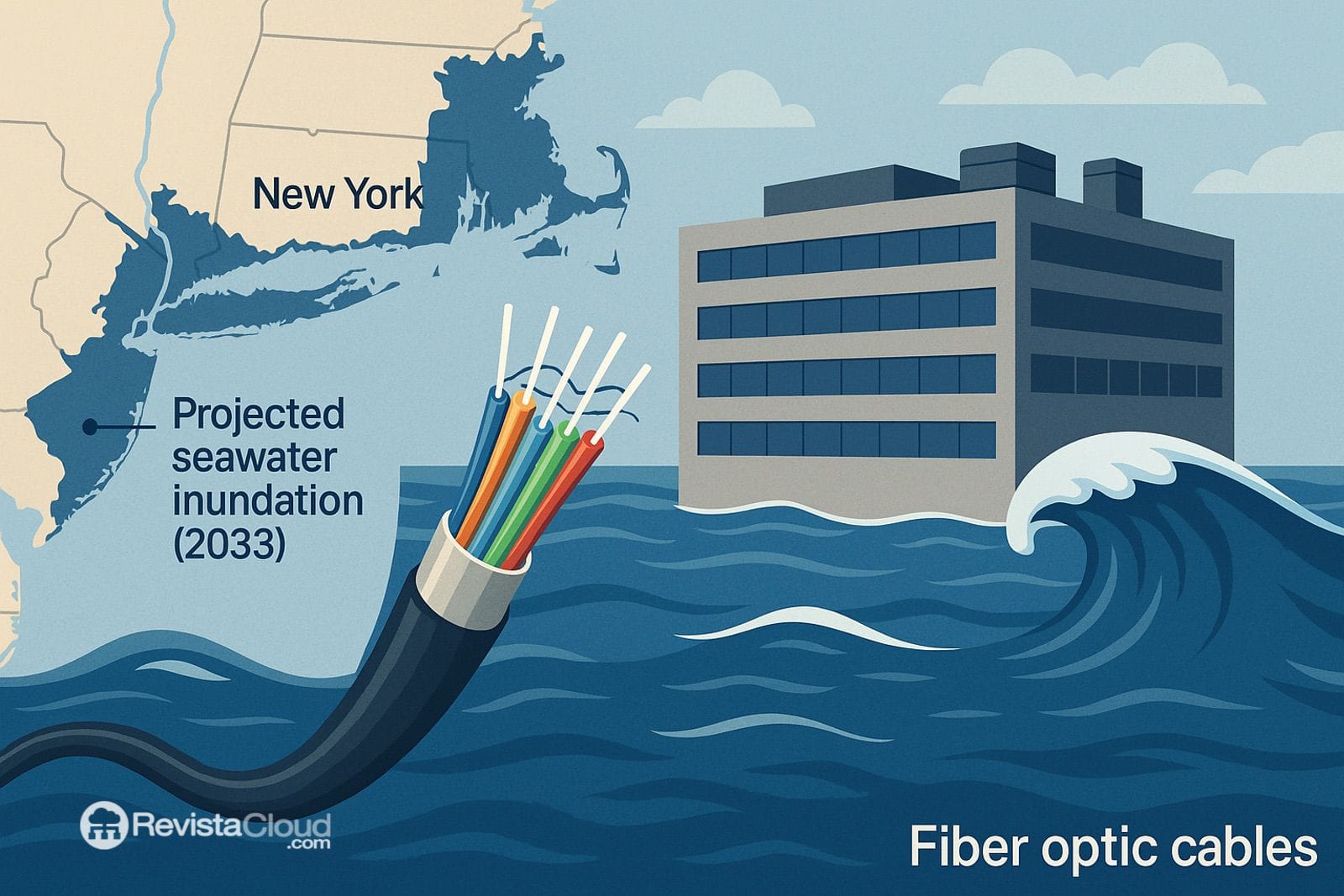Rising sea levels, one of the most concerning consequences of climate change, threaten not only coastal residential areas but also critical internet infrastructure such as data centers, fiber optic cables, and points of presence (PoPs). According to a study conducted by researchers from the University of Wisconsin-Madison and the University of Oregon, a significant portion of the United States’ digital infrastructure could be submerged in the coming years if mitigation measures are not taken immediately.
An Impact Sooner Than Expected
The study Lights Out: Climate Change Risk to Internet Infrastructure reveals that in just 15 years, about 1,186 miles (1,908 km) of long-range fiber optic cables and 2,429 miles (3,909 km) of metro fiber will be underwater, along with over 1,100 data centers and access pointsanrw18_final. Unlike undersea cables, which are designed to withstand continuous immersion, terrestrial fiber cables do not cope well with prolonged exposure to water, potentially leading to accelerated deterioration and, ultimately, widespread service disruptions.
“Much of the damage that will occur over the next 100 years will happen much sooner than expected,” warned Professor Paul Barford, co-author of the study. “We don’t have 50 years to plan for it. This is an urgent wake-up call.”
Key Areas at Risk
Metropolitan areas such as New York, Miami, and Seattle are among the most vulnerable. Specifically, it is projected that 46 points of presence (PoPs), 43 data centers, and 8 internet exchange points (IXPs) in New York will be affected. Miami and Seattle have similarly alarming figures.
The most exposed companies are CenturyLink, Inteliquent, and AT&T, given the volume of infrastructure they have deployed in coastal areas. This makes the protection and adaptation of their networks a strategic priority.
Beyond Data Centers
In addition to the impact on data centers and backbone fiber networks, undersea cable landings—points where international cables come ashore—are also at risk. Although limited in number, their strategic importance for global connectivity is critical, making their vulnerability add a geopolitical dimension to the problem.
What Can Be Done?
The study emphasizes that hardening infrastructure (e.g., through seawalls or more resilient designs) can only delay, but not prevent, long-term problems. The researchers recommend:
- Relocating critical infrastructure to less exposed areas.
- Redesigning networks with alternative routes that reduce dependence on coastal areas.
- Applying mitigation strategies such as physical reinforcement and network-level redundancy.
Furthermore, future infrastructure deployments should consider climate risk as a factor as relevant as cost or market demand.
Time Is Running Out
With the most optimistic projections estimating a sea level rise of between 30 and 60 centimeters by 2030, and increasingly frequent extreme weather events, the need for action is immediate. “Internet infrastructure was designed with weather resilience in mind, but not to remain permanently underwater,” warn the authors.
If measures are not implemented urgently, the risk will not only be the loss of connectivity in coastal areas but also the compromised operation of the entire global network. A silent threat that could accelerate the fragmentation of the Internet as we know it.

